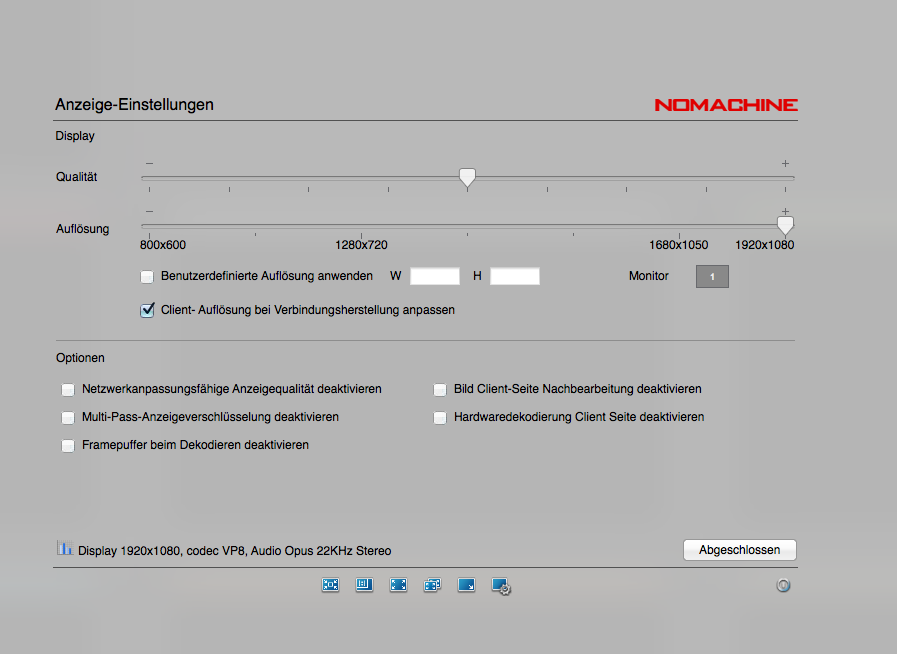

The configuration files for the server (server.cfg) are located as below. In the server configuration file (server.cfg) set:Ĭonnections to the server will be still possible but only when the server host and the end-user's pc/device are on the same local LAN or the server has a public IP. You can do that from the server's User Interface as eplained above, or via command line (nxserver -restart).

Multiple options can be specified, for example:

Click then on the 'Restart the server' button.įor the subscription versions of NoMachine, the following additional options are available:ĮnableUPnP SSH if users connect with the SSH protocolĮnableUPnP HTTP in the case of web connections You can do that from the server's User Interface: click on the !M icon in the system tray and choose 'Show the service status'. If you using NoMachine Free Edition, edit the server configuration file (namely server.cfg) and set:ĮnableUPnP NX for users connecting with the NX protocol Open then 'Server preferences' (previous called 'Connection preferences' for the free version of NoMachine v. Click on the !M icon in the system tray to open the menu and choose 'Show the service status' ('Connections' or ' Server status' for version 5 and 4). Note also that the default port values can be changed from the NoMachine User Interface for server administration. Ports to be opened on the router and mapped to the public IP address of the server host are:Ĥ000 for connections using the NX protocol.Ģ2 or 4022 on Windows for connections using the SSH protocol. If you are using NoMachine Free Edition, you will need to open port 4000 on the router and map it to the public IP address of your NoMachine (server ) host. The UPnP or NAT-PMP port mapping service can work efficiently only when:ġ) It's enabled in the server configuration.Ĥ) The router accepts UPnP or NAT-PMP commands for enabling port forwarding.įor point 4), if the router doesn't accept UPnP or NAT-PMP commands, it will be necessary to configure it manually through its administrative interface. UPnP/NAT-PMP port mapping is disabled by default for: UPnP/NAT-PMP port mapping is enabled by default for: Configure the router to allow a NoMachine client to connect from outside of the private network.Īll server types supports the UPnP/NAT-PMP port mapping, but only products tailored for personal user or small environments have it enabled by default:

Retrieve the public or external IP of the host machine where it's installed. When the NoMachine (server) computer is behind a NAT router or a firewall, NoMachine tries to use the UPnP or NAT-PMP protocol (depending on what is supported by the router) to:


 0 kommentar(er)
0 kommentar(er)
